

February 8, 2017
There are a few must haves in any house I’ve lived in. These are what make an ordinary house my home. Without them I feel unsettled. For me, a house without pets, books, photos, or plants is cold and sterile and far from feeling like a sanctuary. This post is about adding another easy care, almost goof proof plant to your home. Plants bring life, color and texture. A large plant can fill a corner of an almost empty room, providing a focal point as you wait to discover just the right piece of furniture. Or bring attention to a treasured piece of furniture. A plant can add softness to a vignette of objects with hard edges. Or bring curves to a room filled with square and rectangular lines of furniture. Plants help clean the air in our modern homes. And let’s face it, plants are beautiful.
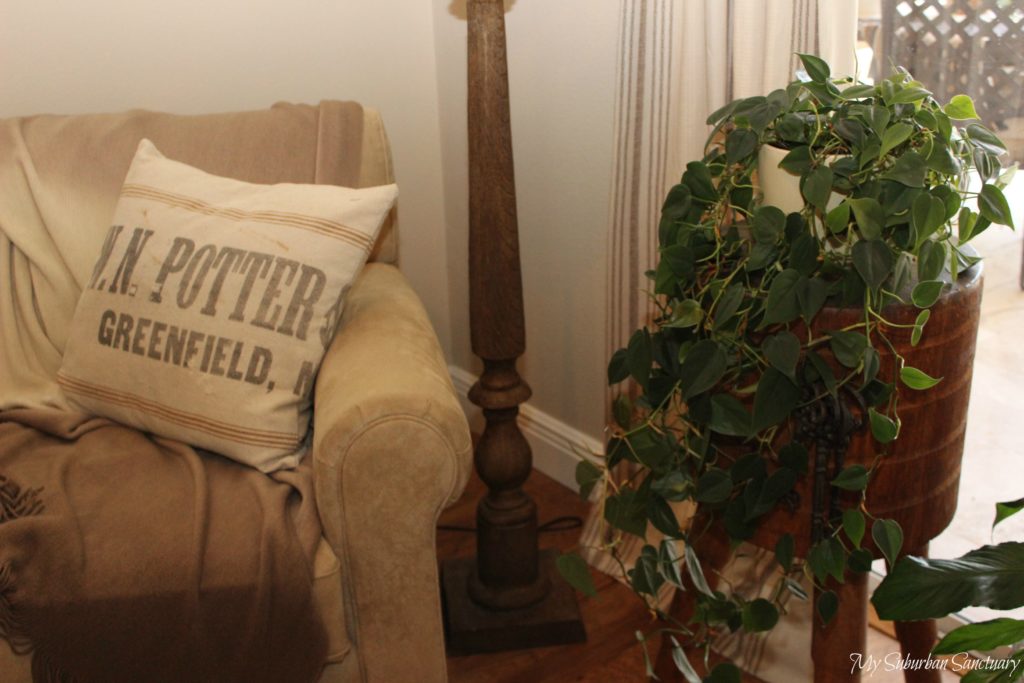
Some of the easiest plants to grow indoors are in the family Philodendron, with over 200 varieties, philodendrons are some of the most often used indoor plants. One of the easiest of these is the the Heart Leaf Philodendron. Originating in South America, and variously called philodendron cordatum sweetheart, scandens oxycardium or hederaceum var. oxycardium, this easy care plant is on NASA’s list for “clean air plants.” They can be purchased at every garden center, big box store and most grocery stores. The leaves emerge shiny and bronze but quickly turn dark green and heart shaped. They thrive in moist, but not wet, soil and bright indirect light, but tolerates lower light as well. Leaves will be pale if the plant is placed in an area with too much light. Not enough water produces yellow leaves, too much and the leaves will be brown. Too much fertilizer will cause brown leafs tips. In spite of this, sweetheart plant is very hard to kill. It has very few pests and the biggest concern is root rot from over watering. Caring for this plant couldn’t be easier, unless it’s a fake one, but why do fake when real is so easy??? Even the most brown thumbed of gardeners can grow it successfully.
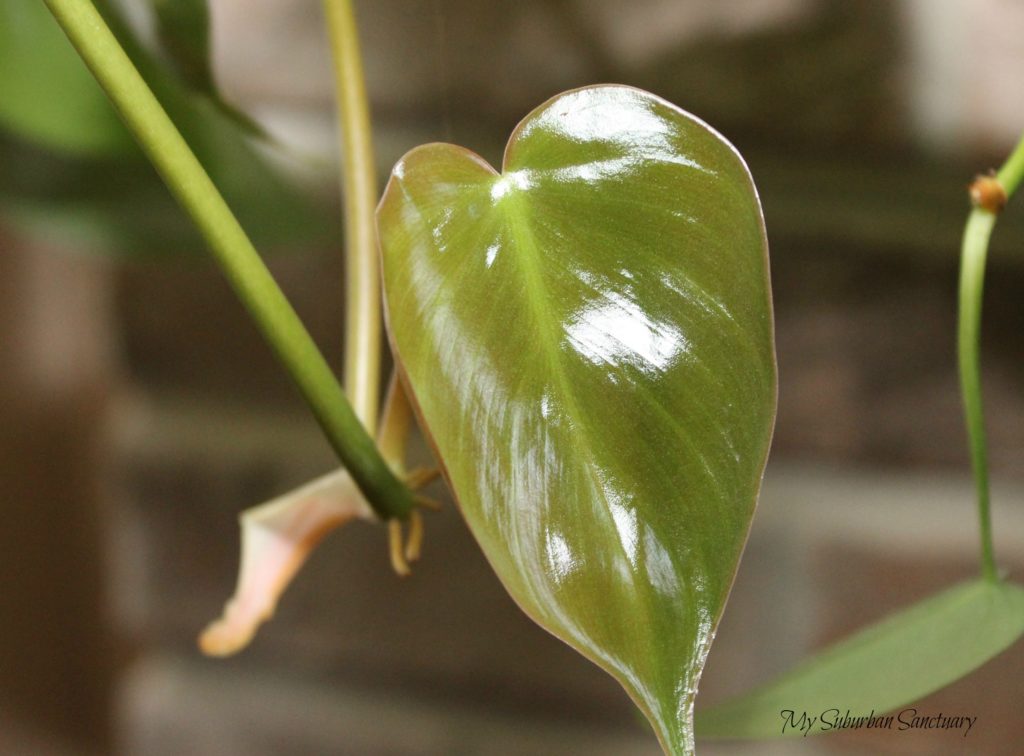
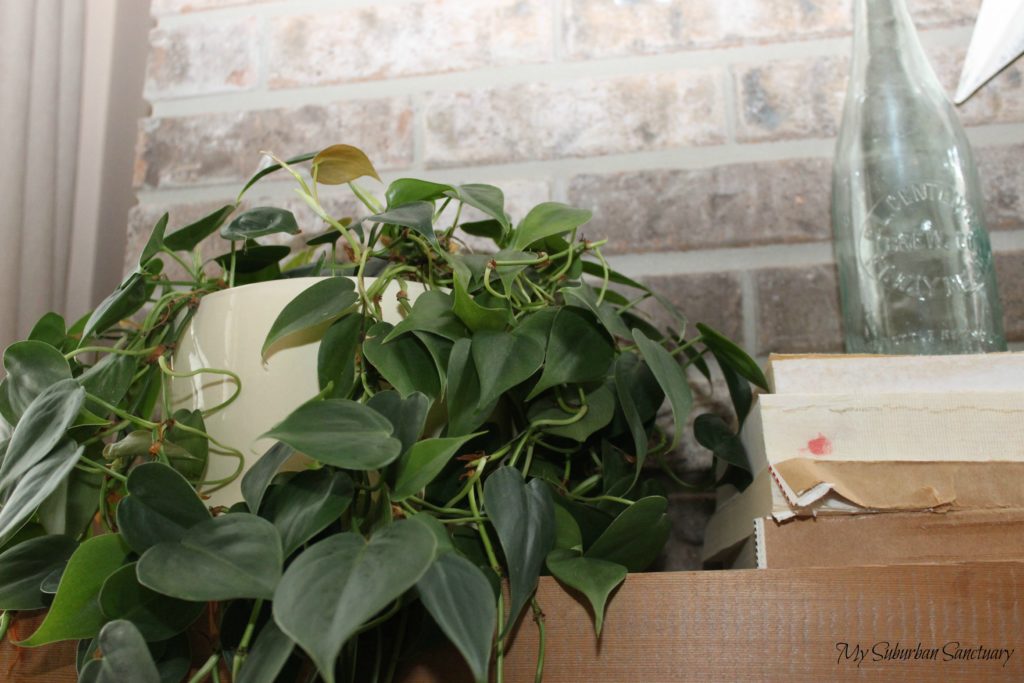
Give it regular water, letting the soil dry out a bit between waterings. As always, test the soil by sticking your finger in the pot to about an inch, if the soil is damp, hold off, if dry, water. Fertilize with half strength (50/50 mix of fertilizer and water) monthly during the spring and summer, every other month during fall and winter. Wipe the surface of the leaves with a damp cloth or sponge to remove dust. Place it where it receives several hours of indirect light. That’s it. Couldn’t get any easier.
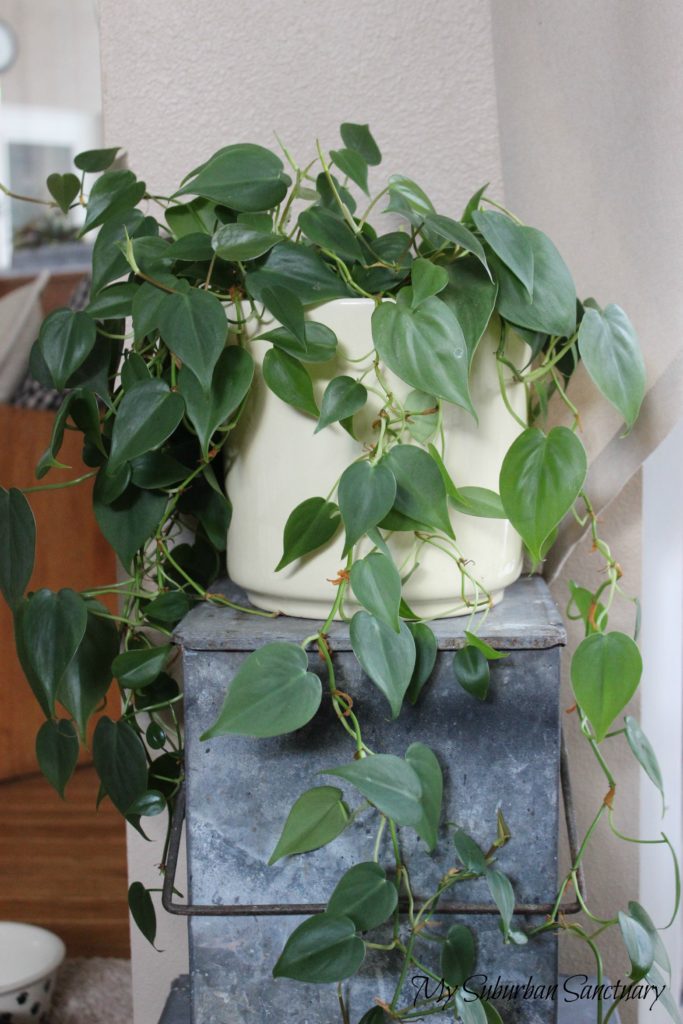
Heart leaf philodendron grows quickly and without trimming will grow as a vine like plant, with stems that can easily reach four feet. It can be trained to climb a small trellis but looks best with its stems drooping gracefully over the edges of pots, cascading down the edges of book cases or shelves. It makes an excellent hanging plant as well. Trim or pinch the stems regularly to keep the plant bushy or whenever the growth becomes spindly or stems get too long for the place you’ve chosen for it. Trim or pinch at a leaf node. (The place where the leave stem attaches to the plant.) Philodendron is easy to propagate, ensuring a continuing supply of new plants. Clip lengths at a leaf node, strip all but a few leaves on the stem and put in a glass or other container of water. Within two weeks you’ll see roots. You can leave the plant in your container and grow it that way for quite some time, I’ve left some in a container of water for months before potting because, as you know, I’m lazy and why should I take it out of a place it obviously loves and stick in a pot of dirt??? That seems cruel. But…if your object is to propagate a new plant for an actual pot then apologize to it and put it in a container filled with good soil. Water immediately after potting to thoroughly moisten the soil, but don’t soak it. Then water as needed. Re-pot your philodendron when it becomes root bound, making sure to gently separate roots before placing it in its new container.
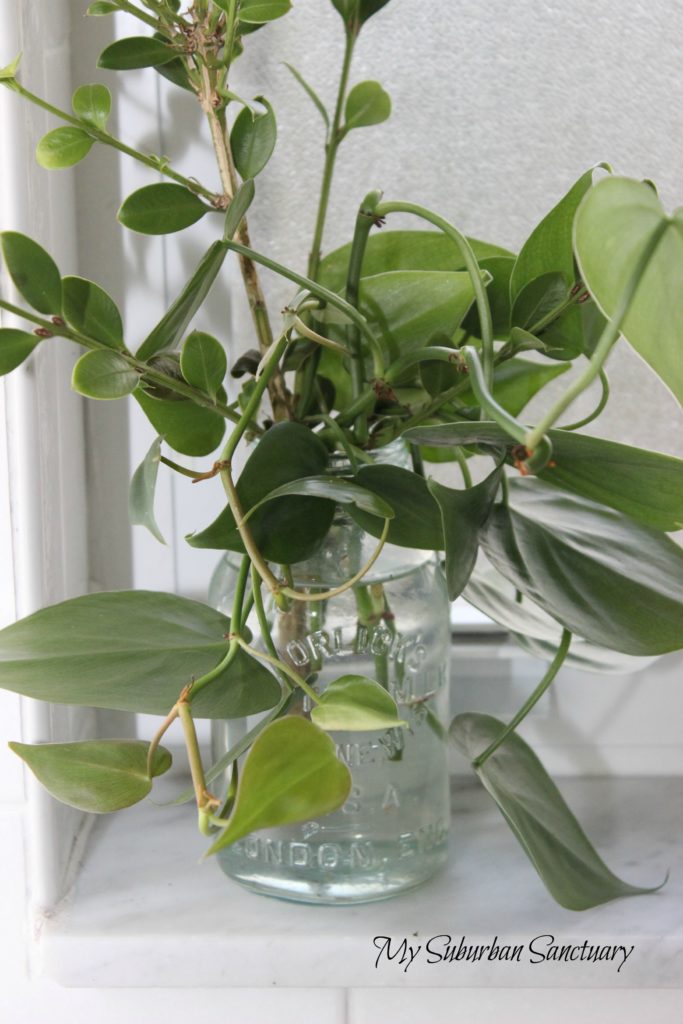
NOTE of caution: The leaves of this plant contain calcium oxalates and are toxic to pets. If you have these plants in your home and notice your dog or cat pawing at its mouth, vomiting or drooling or foaming contact your veterinarian at once.
In the last few years new varieties have been developed with lighter green, almost chartreuse leaves and some with variegation. No matter which variety you choose, or what you call it, heart leaf philodendron IS a sweetheart and easily makes the list of almost goof proof plants, adding softness, color and life to almost any setting. It’s a perfect choice for farmhouse, cottage or country styled homes.
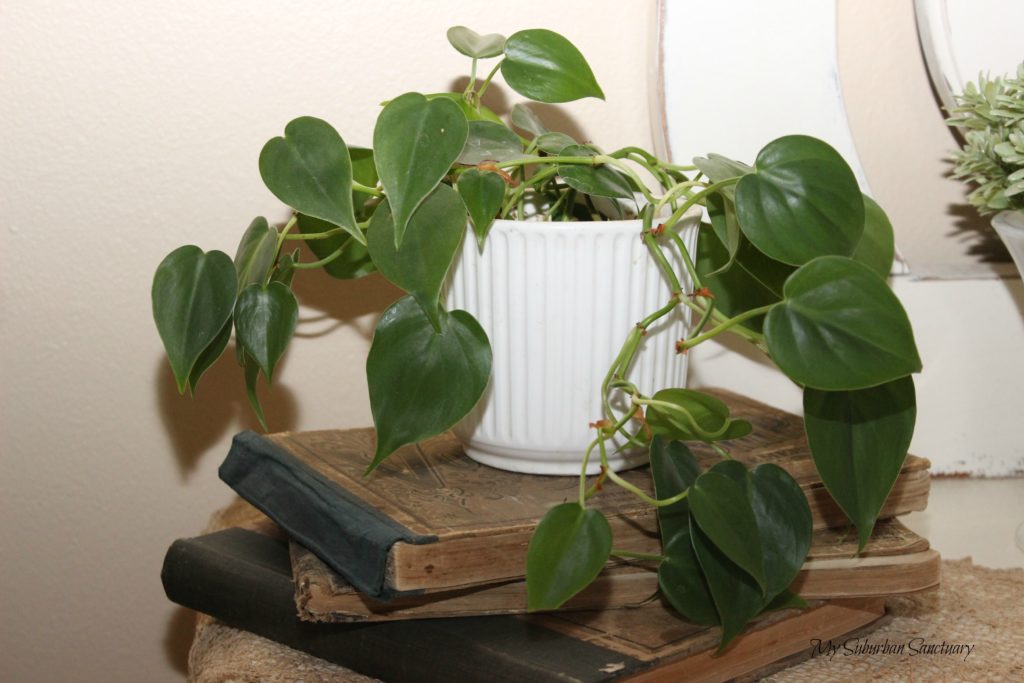
Save
Save
Save
Save
Save
Save
Save
Save
Save
Spread the Joy!
Recent Comments